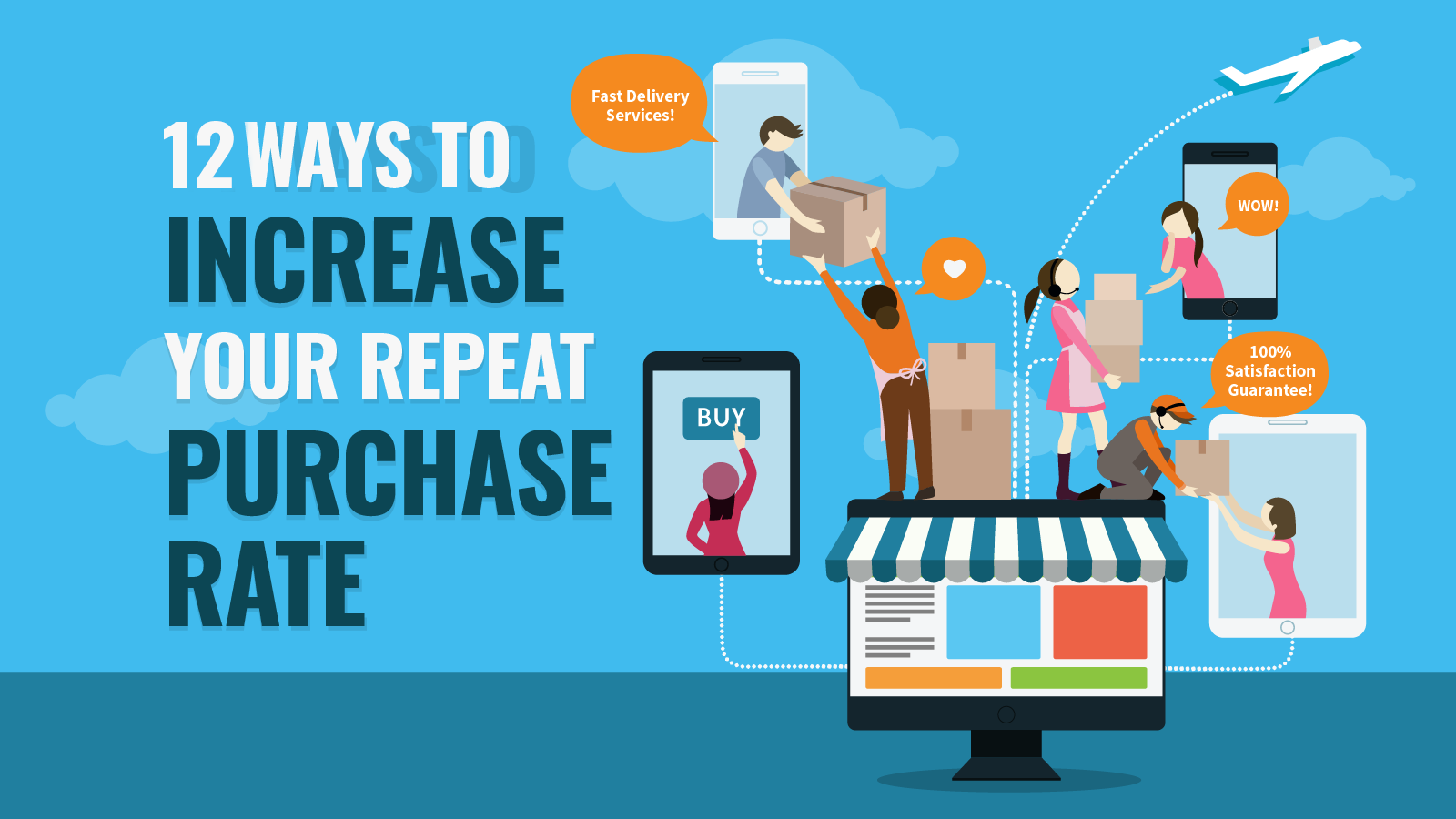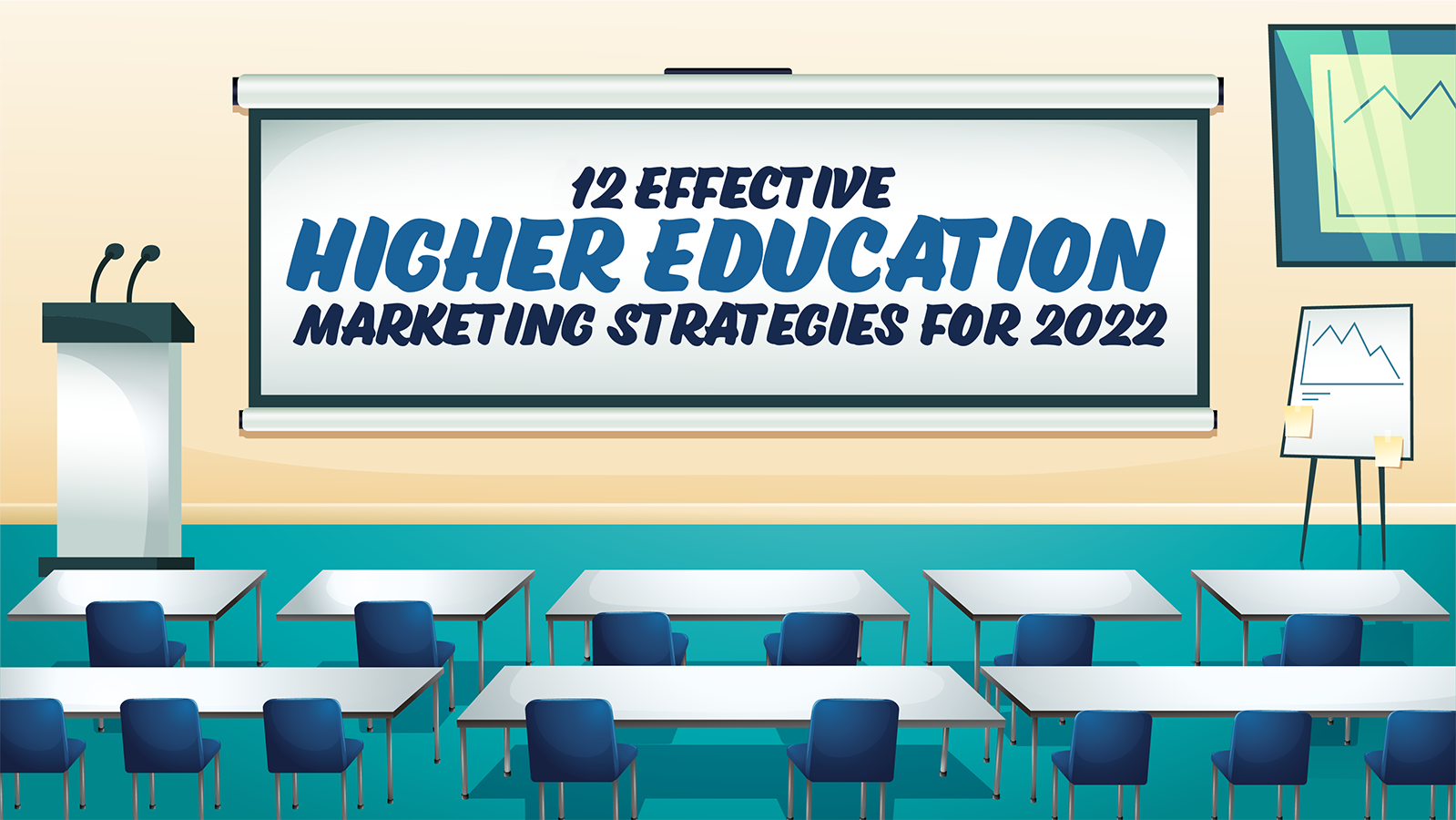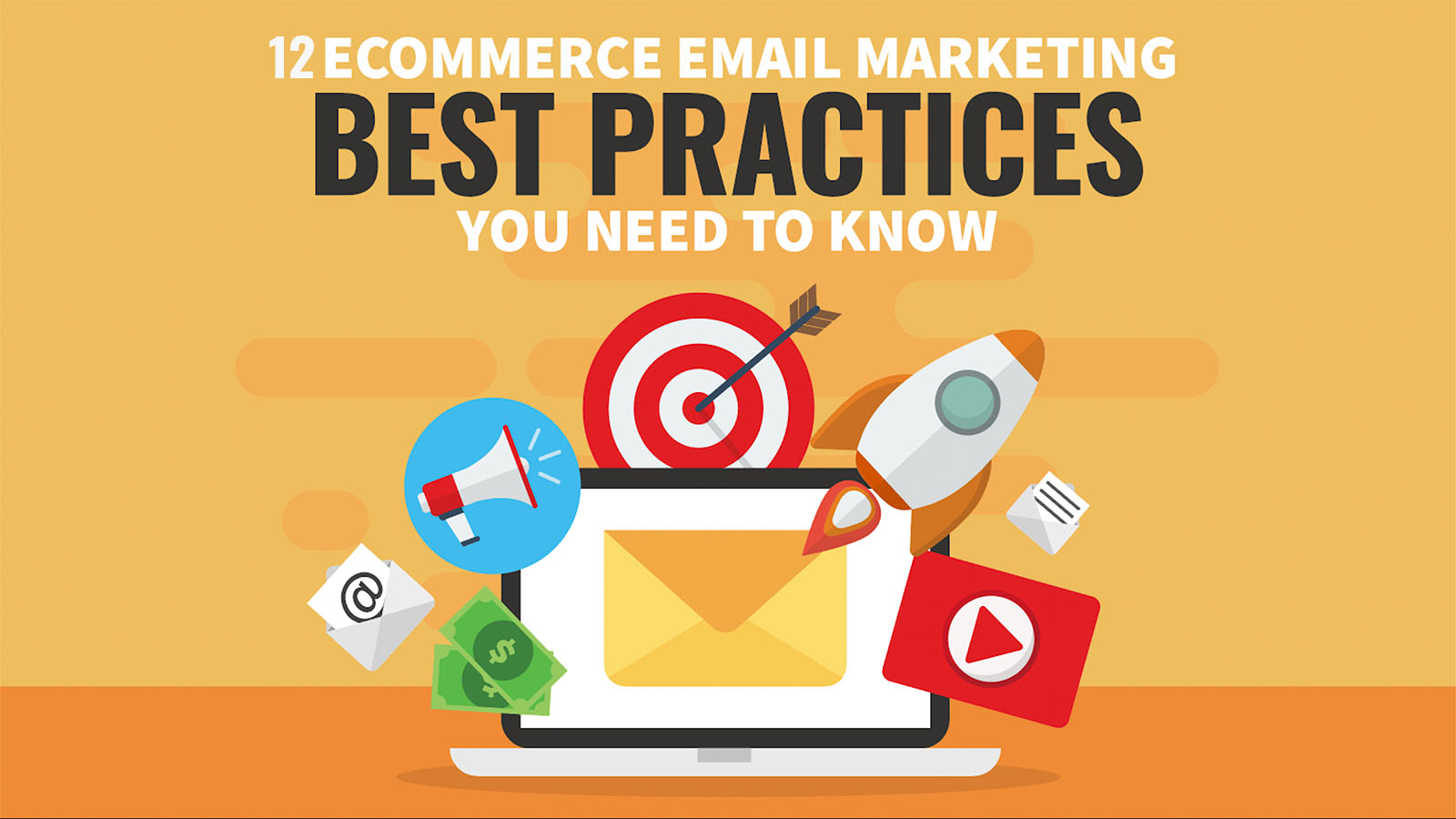If you run an ecommerce business, you know increasing your average repeat purchase rate is important. But what makes a buyer become a loyal repeat customer?
In this blog post, we’ll break down the benefits of increasing your repeat purchase rate and then show you how to do it yourself. If you implement each of the strategies in this post, you’ll be surprised how quickly revenue can increase when you tap into your existing customer base.
Why Focus on Increasing Repeat Purchase Rate Rather Than Getting New Customers?
Most ecommerce businesses spend 80% of their marketing budget on acquiring first time customers. But did you know that 41% of an average ecommerce store’s revenue is created by only 8% of its customers?
When you’re starting out, you’ll have to get new customers, and to grow, you need new customers as well. But many ecommerce businesses would benefit by focusing more budget on customer retention.
What’s the average repeat purchase rate?
Average repeat purchase rates for ecommerce companies fall between 20 to 40% in most studies. Alex Schultz, former vice president of growth at Facebook says “If you can get 20–30% of your customers coming back every month and making a purchase from you, then you should do pretty well.” That number lines up with Shopify’s 27% average repeat purchase rate for first time customers.
Here’s the kicker though - according to Shopify, once a customer returns for a second time, their likelihood of purchasing again jumps to 45%. The fourth time a customer returns, the odds of them buying again jump to 56%!
So how do you get there, how do you get customers to come back a second, third and fourth time? Let’s get started with the 12 data-backed strategies to increase your average repeat purchase rate.
1 - Get To Know Your Dashboard
Take time to build your understanding of the dashboards in your marketing platform. Step 2, Track and Benchmark, depends on dashboards being up and running. Tools like Databox provide enhanced customer dashboards so you can see a broader view of your funnel in one place, merging data from multiple sources into one panel.
2 - Track and Benchmark
Increasing your average repeat purchase rate starts with understanding where your business is right now. The rest of the tips in this article may work without taking benchmarks, but without setting a baseline, your team will not know the ROI from implementing each strategy.
Let’s go over the metrics you should be tracking:
Repeat Purchase Rate = Number of Returning Customers / Number of Total Customers
This one should be a given. If you are trying to increase something, you better be tracking it! Repeat purchase rate alone though does not tell the whole story of your business’ health. Think of it this way, the quickest way to make your repeat purchase rate rise would be to stop getting any new customers, but that’s a terrible idea!
To really understand your business you’ll ALSO want to track a few other metrics like:
Total Sessions = How many visitors came to our site in a given period?
You want to see a healthy upward trend in total sessions as your business grows. You need new customers to mint them into long term repeat purchasers.
Conversion Rate = Number of Visitors Who Make a Purchase / Total Website Traffic
Is your site doing its job? A good ecommerce website needs to not only attract new customers but also get them to take action and purchase or engage. If your conversion rate is not up to or exceeding industry standards, focus on that before working on getting repeat business.
Email Opt-Ins = Can we reach these customers (for free) again?
Email is a powerful tool for maintaining relationships with your customers. Even if people follow you on social media channels like Facebook and Twitter, you may not be able to reach them organically. Facebook’s organic reach has dropped dramatically over the years, but email is a direct channel that you own. Tracking your email database growth and health will be key to some of the strategies we’ll explore next.
Customer Lifetime Value - How much are customers spending on average?
In the end, increasing your average repeat purchase rate is about increasing customer lifetime value (CLV). Tracking CLV is another great data point to use when seeing if your efforts to reduce ecommerce churn are working.
Purchase Frequency = Number of Orders / Number of Unique Customers
Knowing your average purchase frequency or time between orders is extremely useful for timing your outreach efforts.The purchase frequency formula is simple: take the number of orders by a group of unique customers within a given time frame, and divide it by the number of customers.
For example, if you have 12,000 orders from 2000 customers in a year, your purchase frequency is 6 per year. That means your average time between purchases is 2 months.
3 - Build an Email List
Sending regular, targeted emails to customers and fans of your business is a time-proven ecommerce strategy to drive repeat purchases. Unlike remarketing ads, AdWords or social ads, you don’t have to pay a ridiculous amount to reach your email list.
Be careful though, because while sending email is easy, it DOES have a cost. Each email you send gets your customers attention, and if subscribers don’t find your messages engaging and relevant enough to continue reading, they may begin to tune out your brand.
Using send frequency optimization is a great way to avoid this problem by lowering the frequency of emails for subscribers who show declining engagement.
A few examples of triggered emails you could (and should!) be sending are:
Welcome Email Series - Introduce new subscribers and customers to your brand's story and other offerings with a welcome email sequence. Welcome emails have some of the highest open and click rates of any emails you’ll send, so nail the content through careful A/B testing to optimize conversions.
Abandoned Cart Series - An ecommerce staple, abandoned cart emails enjoy a 10.7% conversion rate, compare that to 1% which is the average for newsletters.
Reactivation Campaign - Win customers back with a compelling reactivation and re-engagement series or just determine who doesn’t want to hear from you anymore.
4 - Use Personalization
Personalization goes far beyond just greeting customers by name. 33% of customers abandon a business relationship because of lack of personalization. The more you interact with your repeat customer base, the more data you have about their preferences. Use this data to tailor your messaging and promotions using marketing automation by doing things like:
Personalized product recommendations - With the right software, you can personalize the product offerings in your emails each user based on the previous actions on your site. By showing returning customers items in same category as they purchased before, you increase their chances of them purchasing again.
Personalizing email send times - People shop and check email at different times of the day. Email send time optimization has been shown to significantly increase engagement by timing your messages to go out when customers have previously clicked on or engaged with your emails.
5 - Make Ordering Seamless
“I am addicted to ordering things on my iPhone from Amazon Prime. I order at all hours of the day, particularly late at night when I should be going to sleep.” - Amazon Prime Addict
Why is ordering from Amazon so addicting? It’s easy.
Browsing is fun, getting packages is fun. Getting packages the same day you order them is even more fun! Entering your credit card information and re-typing your address is not fun!
One way to solve this issue is by having customers create accounts. To reduce friction, give customers the option to save their information in an account AFTER they have entered their information and ordered. This will streamline the buying process seamlessly for returning customers and is a great way to increase your average repeat purchase rate.
6 - Answer All Questions and Comments
80% of companies believe they offer superior customer service, but only 8% of customers believe they are receiving “superior customer service.”
A happy customer is a loyal customer. Having great support and being responsive to customers should be a given. If your goal is to build long-term relationships with customers, responding promptly when they reach out is extremely important.
Remember, long-term customers spend more and typically become more loyal with each additional purchase. Dedicating employee resources to responding to customers will likely have a higher ROI than that new ad campaign you were thinking of running.
7 - Offer Incentives
Offering coupons and discounts is a well established way of getting repeat business. For some brands, coupons might not be the right answer, there is a risk customers start to wait for discounts if coupons are over used. But used the right way, coupons can be a great way to encourage customers who might otherwise churn to come back into the fold.
8. Set Up a Customer Loyalty and Rewards Program
A strong customer relationship and brand loyalty go hand in hand. A study by Invesp shows that 58% of consumers buy from brands whose loyalty program they belong to at least once a month and just a 5% increase in customer loyalty would mean an increase of 25%-100% of average profit per customer.
So don’t forget to show your customers that you value them with an incentive-based loyalty program. But make it easy to redeem points and rewards.
9. Showcase Your Reviews
Product pages with customer reviews bring 3.5 times more conversions than those without while 79% say they trust online reviews as much as personal recommendations. Customer reviews is an important step in a prospective customer’s decision-buying.
Reviews also show your brand’s value and authenticity and can even equate to a stamp of approval or disapproval to customers. With nearly nine out of ten consumers saying they read reviews before making a purchase, it’s crucial to also respond to concerns or less than stellar reviews.
10 - Use Retargeting Ads (maybe)
Re-marketing can be very effective way of increasing your average repeat purchase rate, but it's definitely not the right choice for every brand. Consider your customer persona. How do you want your brand to be perceived long term? The fact is, most people find ads to be annoying, annoying enough that 27% of American internet users block ads. You have to weigh the potential reconversion benefits retargeting ads may bring against the potential that you may annoy some customers.
If you do decide to use retargeting ads, make sure to follow best practices like using a burn pixel so that people who have already purchased don’t continue to see your ad. Optimize your frequency cap, be data-driven in your approach and watch long term trends. A short-term win is not worth losing long-term customers.
To encourage repeat purchases, trigger retargeting based on a data-driven timeframe. Segment your customers based on how long it’s been since they last purchased and adjust your messaging for the different segments.
11 - Think About Your Box!
“When I get a brown box from Amazon each day I am happy. If a few days goes by and I haven't received a package from Amazon, I am sad.” - Amazon Prime Addict
Many ecommerce marketers are so focused on their online efforts that they forget that most of a person's experience with your brand comes through the product and its delivery. Consider your box, the way you package your items, the additional catalogs, coupons, or brand-story information you put in your box. There's a reason Amazon puts logos on the outside of the boxes, and many other brands are moving in the same direction.
12 - Calculate Your Ecommerce Churn Rate
For subscription-based companies, small differences in churn rate can define success or failure but ecommerce businesses don’t often think of ecommerce churn rates because it's a bit harder to calculate. Let’s take a look.
The Traditional Churn Rate Calculation
The basic churn rate calculation for subscription-based businesses is relatively simple. You take the number of paying subscribers you have at the beginning of a given period, and then see how many of those subscribers are still there at the end.
Subscriber Churn Rate = Subscribers Lost During Given Period / Total Subscribers
The Ecommerce Churn Rate Calculation
The ecommerce churn rate calculation is a little more complicated. Because customers don’t actively let you know when they are no longer going to be making future purchases from your business, you have to set a time after which you determine a customer to be no longer active, or “churned.”
eCommerce Churn Rate = Number of Customers Whose Status Changed From Active to Inactive in Given Period / Total Number of Active Customers
In other words, you want to identify customers who have had consistent buying streaks and then predict when those streaks are coming to an end.
What is the average churn rate for ecommerce?
A lot of people ask this, but because there is no one standard ecommerce churn rate calculation used across the board there is no average churn rate for ecommerce businesses.
How Do You Determine Which Customers Are Active?
There are different methods you can use to segment customers into active or churned (inactive). One method is to analyze purchase frequency data and identify at what point a customer’s likelihood of making another purchase drops significantly.
For example, if you find that 90% of customers who don’t buy again within 180 days never return to your store, you could use 180 days of inactivity as your sign that a customer has churned.
Another method is to focus your churn analysis only on customers that have made at least two purchases with your business. Based on Shopify’s statistics above, repeat customers are more likely to repurchase after the second time.
Conclusion
There are many aspects of the post-purchase experience that often get neglected, but hopefully after reading this post, you feel prepared to tackle the challenge and raise your average repeat purchase rate higher than ever this year.
2/9/22 - Note:This article was originally published in December 2018, but has been updated with the latest stats and new information for 2022!






